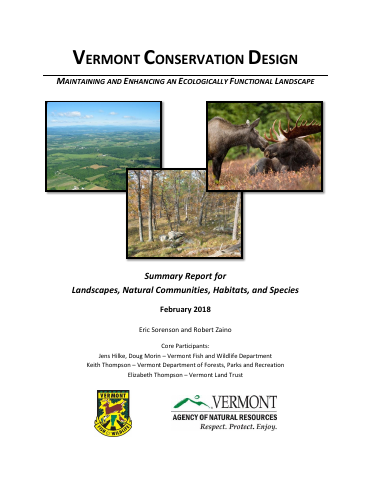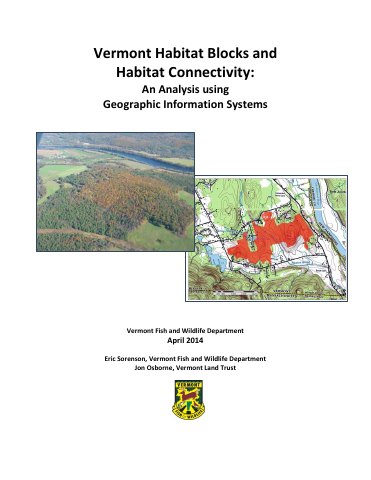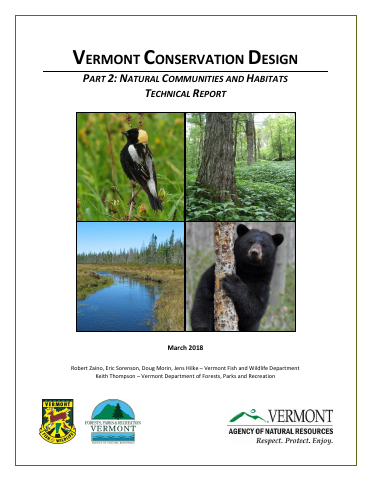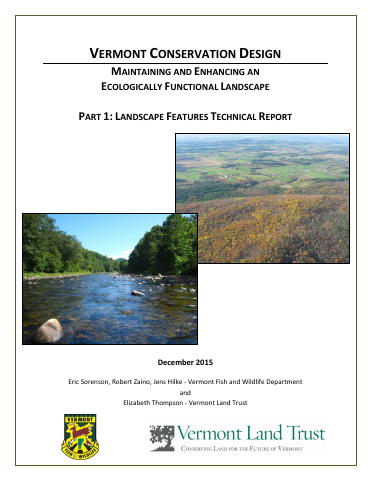Description du projet (anglais)
Vermont Conservation Design identifies features at the landscape and natural community scales that are necessary for maintaining an ecologically functional landscape – a landscape that conserves current biological diversity and allows species to move and shift in response to climate and land-use changes. BioFinder (http://BioFinder.vermont.gov) is the online map accessible to everyone that brings the data alive. At the landscape scale, users can see patterns in Vermont’s forests, waterways, and the places that connect both into functional networks. At the community scale appear significant natural communities, lakes representing high quality examples of different lake types, and similar important features that are vital to assemblages of plants and animals. Finally, a user can see components that support individual species—the habitats and locations on which rare and uncommon species rely, for example. At all scales, Vermont Conservation Design identifies locations of ecological priority. These are divided into priority or highest priority areas, to allow users to make informed decisions about the locations most suitable for development and those on which to focus conservation efforts.
Description du projet (français)
Organisation principale responsable du projet
Vermont Fish & Wildlife Department
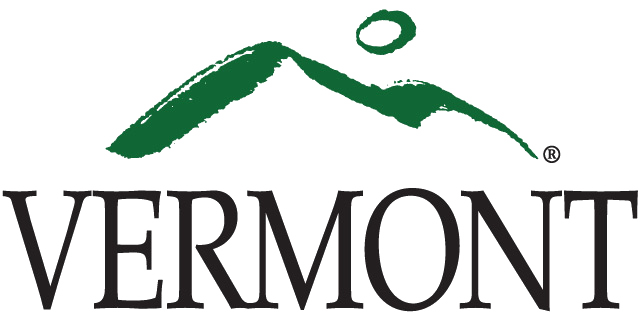
Organisation(s) partenaire(s)
Vermont Land Trust

Vermont Department of Environmental Conservation

The Nature Conservancy

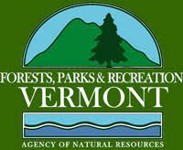
Fait partie d'un réseau plus large
Staying Connected Initiave (SCI)
Statut du projet
En cours
Date de début du projet
2012
Écosystème(s) concerné(s)
Forestier
Eau douce
Riverain
Catégorie(s) d'actions liées à la connectivité
Établissement de noyaux prioritaires
Conception de réseaux de corridors
Protection des terres
Planification de l'utilisation des terres
Sensibilisation
Politiques et gouvernance
Recherche (Évaluation de la connectivité sur le terrain)
Recherche (Modélisation)
Restauration
Mots-clés standards
Corridors
Approche 'stepping stone'
Transport (routes, chemin de fer, ponceau, pont)
Mots-clés
Conservation Design
Interior Forest
Physical Landscape Diversity
Surface Waters & Riparian Areas
Natural Communities
Rare Species
Wetlands
Vernal Pools
Conservation Targets
Couverture taxonomique
Amphibiens
Oiseaux
Poissons
Champignons, moisissures et levures
Insectes
Mammifères
Autres invertébrés
Reptiles
Plantes vasculaires
Étendue géographique
Région(s)
Vermont
Nom du lieu
Vermont (statewide coverage)
Reports, publications or pictures
